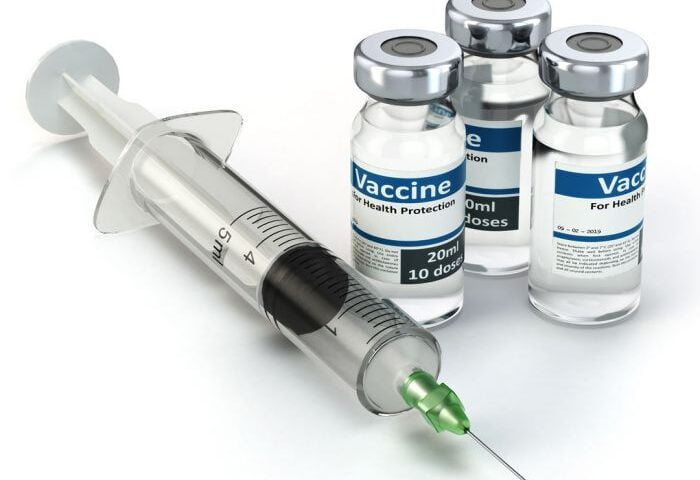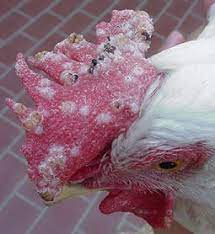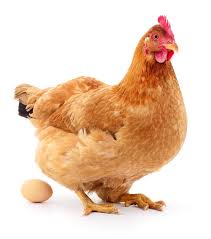Smallpox
Smallpox is a slow-spreading viral infection that affects many species of birds, including all commercial poultry breeds. It occurs in both wet and dry forms. The wet form is characterized by a marked rash in the mouth and upper respiratory tract. The dry form is characterized by scaly, scaly skin lesions that develop into thick scabs. The disease can occur in birds of any age, at any time. Mortality is usually not significant unless respiratory involvement is severe. Avian influenza can cause depression, decreased appetite, and poor growth or egg production. The course of the disease in an individual bird lasts three to five weeks.
What causes Smallpox?
Smallpox is caused by the DNA virus Smallpox. There are five or six closely related viruses that affect different species of birds but there are several strains. Transmission occurs through skin abrasions or bites, through the respiratory tract and possibly through ingestion of contaminated scabs. It can be spread by birds, mosquitoes or fomites (inanimate objects such as objects). The virus is very resistant to drying and under certain conditions can survive for months. Mosquitoes can acquire infectious virus for a month or more after feeding on infected birds and can then infect other birds. Infected birds do not remain carriers.
Prevention and treatment
There is no treatment for birds and prevention is by vaccination of alternative bird species. Where preventive vaccination is used, all chickens are vaccinated when the birds are six to ten weeks old and a single dose of Smallpox vaccine provides lasting protection. Vaccination of chicks is not usually required unless the population of the chicks is high or there has been a previous infection. Chicks can be vaccinated as young as one day of age. During outbreaks. If there is evidence of secondary bacterial infection, broad-spectrum antibiotics can help reduce morbidity and mortality. As mosquitoes are known to be carriers, mosquito control measures can be beneficial in reducing the spread of the disease to indoor chickens.
to return
The virus contained in scabs contaminates the environment and can survive for months. Mechanical transmission is considered the primary route of virus transmission, and transmission can occur through broken or cracked skin. Mechanical vectors, such as insects, can carry the Smallpox virus and can deposit the virus in susceptible birds. Flies can walk on the eyes of birds, leaving the virus behind, and mosquito bites can cause rapid spread of Smallpox throughout the farm. Airborne transmission is also suspected in many cases of Smallpox
The mucous membranes of the trachea and mouth appear to be particularly susceptible to the virus. Infection can occur in the absence of trauma or injury. In a contaminated house, infection can easily spread from bird to bird, cage to cage, and through standing water in drinking cups.
Prevention and control
Because there is no effective cure for birds, prevention and control are essential to keeping livestock healthy. Below are some ideas that will help reduce the impact of birds.
Virus particles can be found in the environment and in the dirt found in poultry houses, so dust control and environmental isolation are important.
An effective pest control program should be in place.
A biosecurity program to prevent the movement of materials that could be contaminated with Smallpox should be implemented.
Vaccination is done based on exposure history—adjustments, if necessary, can be made in the presence of outbreaks because Smallpox infections usually spread slowly.
In the event of an outbreak, liquid disinfectant (used for cleaning water dispensers) added to the water appears to help reduce deaths.
Make a stock solution by adding 30 to 45 ml/L (4 to 6 oz/gallon) of concentrated iodine to water.
Spray or fog the house with a deodorizer.
Vaccination
Vaccination should be completed before exposure to avian influenza viruses. Areas with year-round mosquito populations often use 2 vaccinations, one early and one later for “permanent” protection.
NWU vaccination guidelines
Chicks can be vaccinated as early as 1 day of age. A culture-based vaccine (TCO) (at a dose of ¼ to ½ per chick) can be used at hatch, either alone with a single injection site, or in combination with Marek’s disease vaccine. This type of vaccine does not provide lifelong protection, but should provide adequate protection until a second vaccination is given.
For continued protection, birds need to be vaccinated after 8 to 10 weeks with the original rabies vaccine (CEO).
Use the 2-prong syringe applicators provided with the vaccine. This allows the skin to break and release the vaccine virus 2 times and provide a full dose of vaccine.
Check for “take” (e.g., a small bump or band at the vaccination site) 6 days after vaccination. Vaccination “take” should be seen in 99 to 100% of vaccinated pullets.
Check to ensure the correct amount of vaccine is used and recorded for each batch.
In highly challenging areas, birds may require 2 vaccinations at the fledgling stage; an early vaccination at 3 to 6 weeks of age and a second at 8 to 14 weeks of age. Additional vaccinations may be added, depending on the level and timing of the challenge.
The pigeon Smallpox vaccine appears to provide excellent cross-protection against several types of Smallpox in the field. The combination of bird and pigeon Smallpox induces the broad-spectrum immune response required for effective protection. Use a combination of pigeon Smallpox and bird Smallpox vaccine at a dose of 1.25 mg per bird. These vaccines can be mixed together and given in a single application with a webbed wing.
The best vaccine response is achieved by breaking the skin into four sections. The skin can be injected four times with one application by gluing 2 vaccine applicators together. Additional vaccine diluent is required to provide a dose of 1.25/bird. The amount of vaccine administered per group should be monitored and recorded.
In a flock that receives multiple Smallpox vaccinations or age-matched vaccinations, the percentage response or vaccine efficacy rate from the next vaccination will be less than 99 to 100 because some birds will still be protected and will not accept the vaccine. “Takes” should still be checked and recorded after each vaccination so that a farm history can be established.
There is no standard clinical test for Smallpox immunity, but one way to check immunity is to take 200 to 300 birds at 18 to 20 weeks of age that were previously vaccinated and re-challenge them with a full dose of Smallpox. At 6 days post-vaccination, check for “responding.” We should expect 99 to 100% of these birds to show “responding.” “Responding” at this time means that they were not previously protected and were susceptible to challenge. Groups at this age (under severe challenge) that do not show 95% immunity may need to be re-challenged.
Conclusion
Dry and wet challenges are always present and are well controlled by a routine vaccination program, but you should monitor your Smallpox control by regularly checking:
changes in the challenge of the farm or surrounding area,
to understand whether the vaccine covers the current challenge of Smallpox,
to monitor the management, techniques, handling and storage of vaccines,
recording the “takes” and the number of vaccines used in each group,
setting the timing of vaccine administration for early protection and for sustained protection, and
Implement biosecurity practices to prevent or reduce the spread of the Smallpox challenge.





